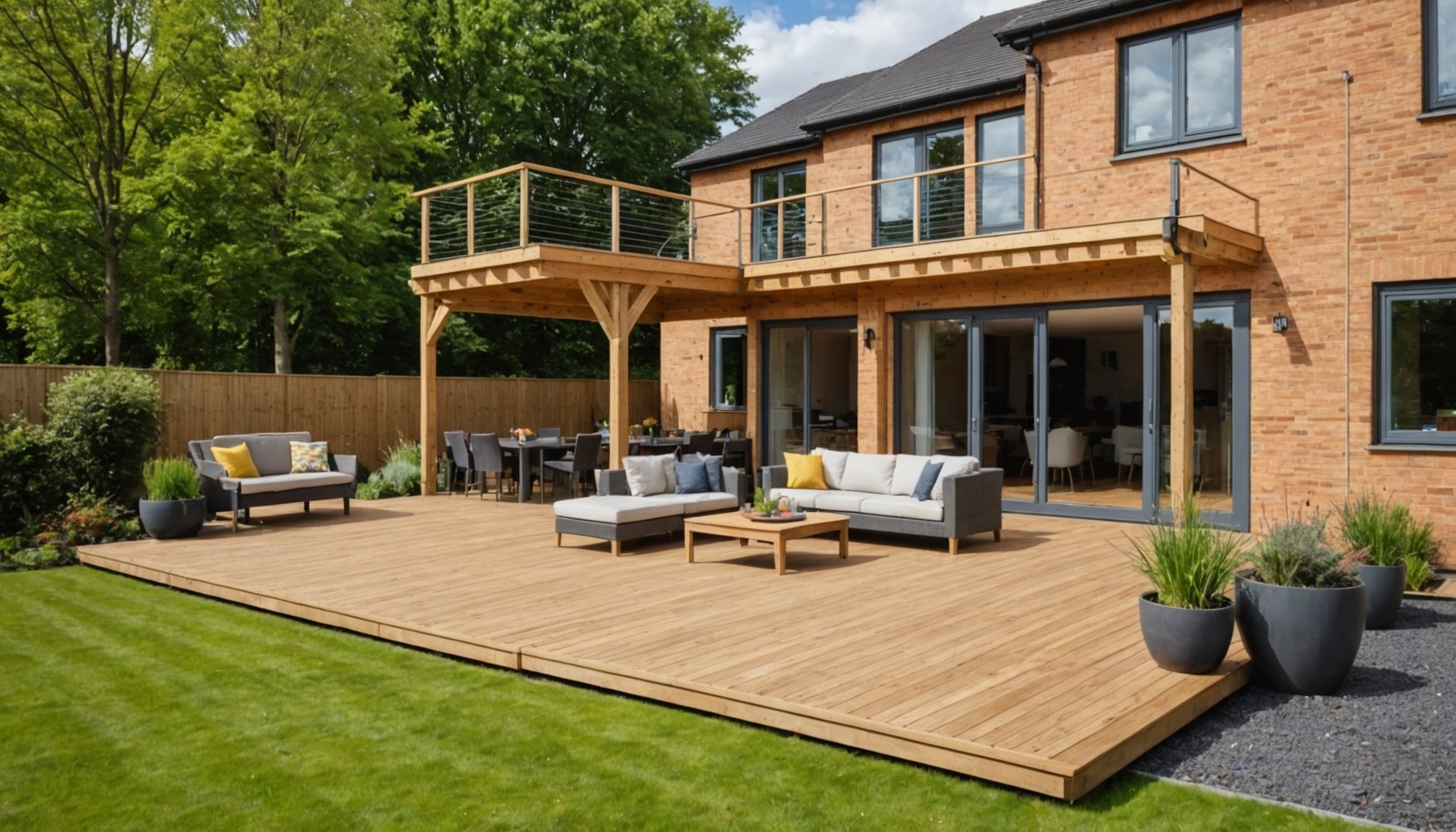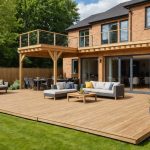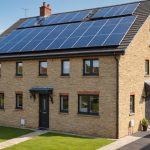Selecting Eco-Friendly Timber for Your Outdoor Deck: A Guide for Sustainable Building in UK Rural Homes
When it comes to building or renovating your outdoor deck, choosing the right materials is crucial, especially if you’re aiming for an eco-friendly and sustainable project. In this guide, we’ll delve into the world of eco-friendly timber and other sustainable materials, helping you make informed decisions for your UK rural home.
Understanding the Importance of Sustainable Building
Sustainable building is no longer just a trend; it’s a necessity in today’s world. With the increasing awareness of environmental issues, homeowners are looking for ways to reduce their carbon footprint and contribute to a greener future.
Lire également : Maximizing Under-Stair Storage: Creative Solutions for Your UK Terraced Home
“Sustainable materials are mostly renewable, reusable, and have a minimal impact on the Earth’s delicate balance,” notes David Suzuki, a renowned environmentalist. This philosophy is particularly relevant when it comes to your outdoor deck, a space that should not only be beautiful but also environmentally friendly.
Eco-Friendly Timber Options
When considering timber for your deck, it’s essential to choose materials that are sustainably sourced and have minimal environmental impact.
Dans le meme genre : Transform Your UK Home Office: Smart Tips to Minimize Eye Strain and Enhance Natural Light
Responsibly Sourced Timber
Opting for timber that is certified by organizations like the Forest Stewardship Council (FSC) ensures that the wood comes from responsibly managed forests. This certification guarantees that the timber is harvested in a way that maintains the health of the forest ecosystem[2].
Benefits of FSC-Certified Timber:
- Supports sustainable forestry practices
- Ensures the timber is harvested without harming the environment
- Promotes biodiversity and ecosystem health
- Provides a traceable supply chain
Reclaimed and Recycled Timber
Using reclaimed or recycled timber is another excellent way to reduce your environmental footprint. This material can come from old buildings, trees that have fallen, or other sources where the wood would otherwise be wasted.
Advantages of Reclaimed Timber:
- Reduces the demand for new lumber
- Saves energy and resources
- Adds a unique, historical charm to your deck
- Can be more cost-effective than new timber
Composite Decking: A Sustainable Alternative
For those looking for a low-maintenance and highly durable option, composite decking is an excellent choice.
What is Composite Decking?
Composite decking is made from a blend of wood fibers and recycled plastic. This combination offers several benefits, including weather resistance, low maintenance, and an eco-friendly profile[1][3].
Key Features of Composite Decking:
- Weather Resistance: Resists warping, rotting, and splintering, making it ideal for UK’s unpredictable weather.
- Low Maintenance: Requires only a quick clean with soapy water to maintain its appearance.
- Eco-Friendly: Made from recycled materials, reducing waste and minimizing environmental impact.
Other Sustainable Materials for Your Deck
Besides timber and composite decking, there are other innovative materials that can enhance the sustainability of your project.
Bamboo
Bamboo is a highly sustainable resource due to its rapid growth rate and ecological benefits. It reaches full maturity in just three to five years, making it a highly renewable resource. Bamboo is also known for its light weight and high tensile strength, making it an invaluable component in sustainable building[4].
Why Choose Bamboo:
- Rapid growth rate ensures constant supply
- High tensile strength and light weight
- Significant carbon dioxide absorption
- Ideal for reducing carbon footprints
Hempcrete
Hempcrete, made from hemp hurds mixed with lime, is another innovative material gaining traction in eco-friendly construction. It offers excellent insulation properties, is breathable, and has a significantly reduced carbon footprint compared to traditional concrete[4].
Benefits of Hempcrete:
- Lightweight and breathable
- Excellent insulation properties
- Fire-resistant and pest-resistant
- Promotes healthy indoor air quality
Design and Maintenance Considerations
When building or renovating your deck, the design and maintenance aspects are crucial for ensuring the longevity and sustainability of your project.
Designing Your Deck
The design of your deck should not only be aesthetically pleasing but also functional and sustainable.
Tips for Sustainable Deck Design:
- Use Sustainable Materials: Choose materials that are certified sustainable or made from recycled content.
- Optimize Space: Ensure the design maximizes the use of space while minimizing waste.
- Incorporate Green Features: Consider adding green roofs, planters, or other features that enhance biodiversity.
Maintenance Tips
Regardless of the material you choose, proper maintenance is key to extending the life of your deck.
Maintenance Tips for Timber Decking:
- Regularly clean the deck to prevent dirt and debris buildup.
- Apply a protective sealant or stain to protect the wood from weathering.
- Inspect the deck regularly for signs of damage or wear.
Maintenance Tips for Composite Decking:
- Clean the deck with soapy water to maintain its appearance.
- Avoid using harsh chemicals or abrasive cleaners.
- Inspect the deck for any signs of damage or wear, though this is less common due to its durability.
Practical Insights and Actionable Advice
Here are some practical insights and actionable advice to help you get started on your eco-friendly decking project.
Choosing the Right Contractor
Working with an experienced contractor who understands sustainable building practices is crucial.
Why Choose an Experienced Contractor:
- They can recommend the best sustainable materials for your project.
- They understand local climate conditions and can advise on the best treatments.
- They can ensure the project is completed efficiently and sustainably.
Budgeting for Sustainability
While sustainable materials might be more expensive upfront, they often offer long-term savings and benefits.
Budgeting Tips:
- Consider the long-term costs and benefits of sustainable materials.
- Look for materials with warranties or guarantees.
- Plan for regular maintenance to extend the life of your deck.
Comparative Analysis of Decking Materials
Here is a comparative analysis of the main decking materials discussed, helping you make an informed decision.
| Material | Sustainability | Maintenance | Durability | Cost |
|---|---|---|---|---|
| Timber | High (if FSC-certified) | High (regular sealing and staining) | Medium to High | Medium to High |
| Composite Decking | High (made from recycled materials) | Low (quick clean with soapy water) | High | Medium to High |
| Bamboo | Very High (rapid growth rate) | Low to Medium | High | Medium |
| Hempcrete | Very High (breathable and fire-resistant) | Low | High | High |
| Recycled Plastic | Very High (100% recycled materials) | Low (maintenance-free) | Very High | Medium to High |
Quotes and Expert Insights
Here are some quotes and insights from experts in the field to further emphasize the importance of sustainable building practices.
“For today’s increasingly eco-conscious homeowners, sustainability is no longer a ‘nice-to-have’ but rather a meaningful requirement in the selections they make for their homes,” says Leslie Adkins, a sustainable landscaping expert[3].
“Hempcrete is not just a building material – it’s a lifestyle choice for those passionate about sustainability,” notes Alex Sparrow, co-author of “The Hempcrete Book: Designing and Building with Hemp-Lime”[4].
Building an eco-friendly deck is a significant step towards creating a sustainable and environmentally conscious home. By choosing the right materials, designing with sustainability in mind, and maintaining your deck properly, you can enjoy a beautiful and functional outdoor space while contributing to a greener future.
Whether you opt for responsibly sourced timber, composite decking, bamboo, or hempcrete, each of these materials offers unique benefits that align with sustainable building practices. Remember, the choices you make for your home not only reflect your personal values but also contribute to the well-being of our planet.
As you embark on your decking project, keep in mind the long-term benefits of sustainable materials and the positive impact they can have on your garden, your home, and the environment. With the right materials and a bit of planning, you can create an outdoor space that is not only beautiful but also eco-friendly.











